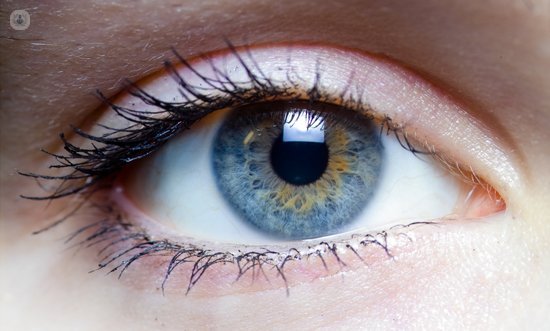Four keys on lazy eye in children
Written by:The eyes of the children and their physio-pathology are all a specialty within ophthalmology, greatly simplifying can comment on some.
Although we can not consider pathology but normal variations in the refractive errors (nearsightedness, farsightedness and astigmatism), they deserve a large number of queries. Among these the most common in children is hyperopia, only occasionally are or cause a real pathology.
These changes should be treated not only to improve the child's vision, but also their school performance and prevent the occurrence of amblyopia, also called lazy eye, and strabismus.
Strabismus is one of the most common and known pathologies, we also see in adults. Also very common are the problems of ocular surface, atopic or infectious or allergic conjunctivitis, which upset the normal life of the child without being generally serious pathologies.
In infants it is common to see watering due to the tear duct stenosis (closed tear).
Lazy eye - Amblyopia
 The amblyopic eye or lazy eye is an eye that has not developed or has lost its ability to see, atrophy and regression of neurons that encode the image occurs. Mistakenly talking about lazy eye when there is a difference of gradation between the two eyes, but one eye looks good with glasses is not a lazy eye.
The amblyopic eye or lazy eye is an eye that has not developed or has lost its ability to see, atrophy and regression of neurons that encode the image occurs. Mistakenly talking about lazy eye when there is a difference of gradation between the two eyes, but one eye looks good with glasses is not a lazy eye.
There are many degrees and types of amblyopia.
Causes of lazy eye
The factors that cause lazy eye are strabismus, the eyes are not the same optically (anisometropia), palpebral ptosis, cataracts, corneal scarring and, in general, any obstacle to the reception of the image. There may also be several causes to be expressed at a time because they are favored, for example an eye with more graduation may also deviate and causes added.
The lack of incentives or defective in one eye stimuli cause neurons unused atrophy and maintained only the most useful neurons. Thus if later you want to restore the sight of one eye, and it can not be depending on age, placing the boundary between the 8 or 9 years old.
Lazy eye treatment
After a good diagnosis of the cause and usually suitable glasses. The classic and most effective, although not the only, treatment are occlusions. This is to cover the other eye with a patch on the skin to ensure that the small determined using at least one eye we want to treat time.
The duration and intensity of treatment vary from case to case, depending on the severity of the case and the child's age. But it should be extended to achieve maximum vision and then make a "maintenance" until 8 or 9 years.
Vision problems in children vs. grown ups
The child is a developing organism, this makes a big difference in the treatment and adult disease, is nothing more or less easy, it's different. The vision is also developed in early childhood, we learn to see, because we fundamentally prevent amblyopia. If your pediatrician and ophthalmologist fight for it could be prevented in many cases.
All children with a history of strabismus, farsightedness or amblyopia in their immediate family should be reviewed.At the other extreme it is currently treated with agility cataract in adults, even trivialized excess surgery, but treatment of congenital cataract in a child may have big problems, not because of the surgery, and correction optics, but further processing of visual rehabilitation and deep amblyopia it can produce.



